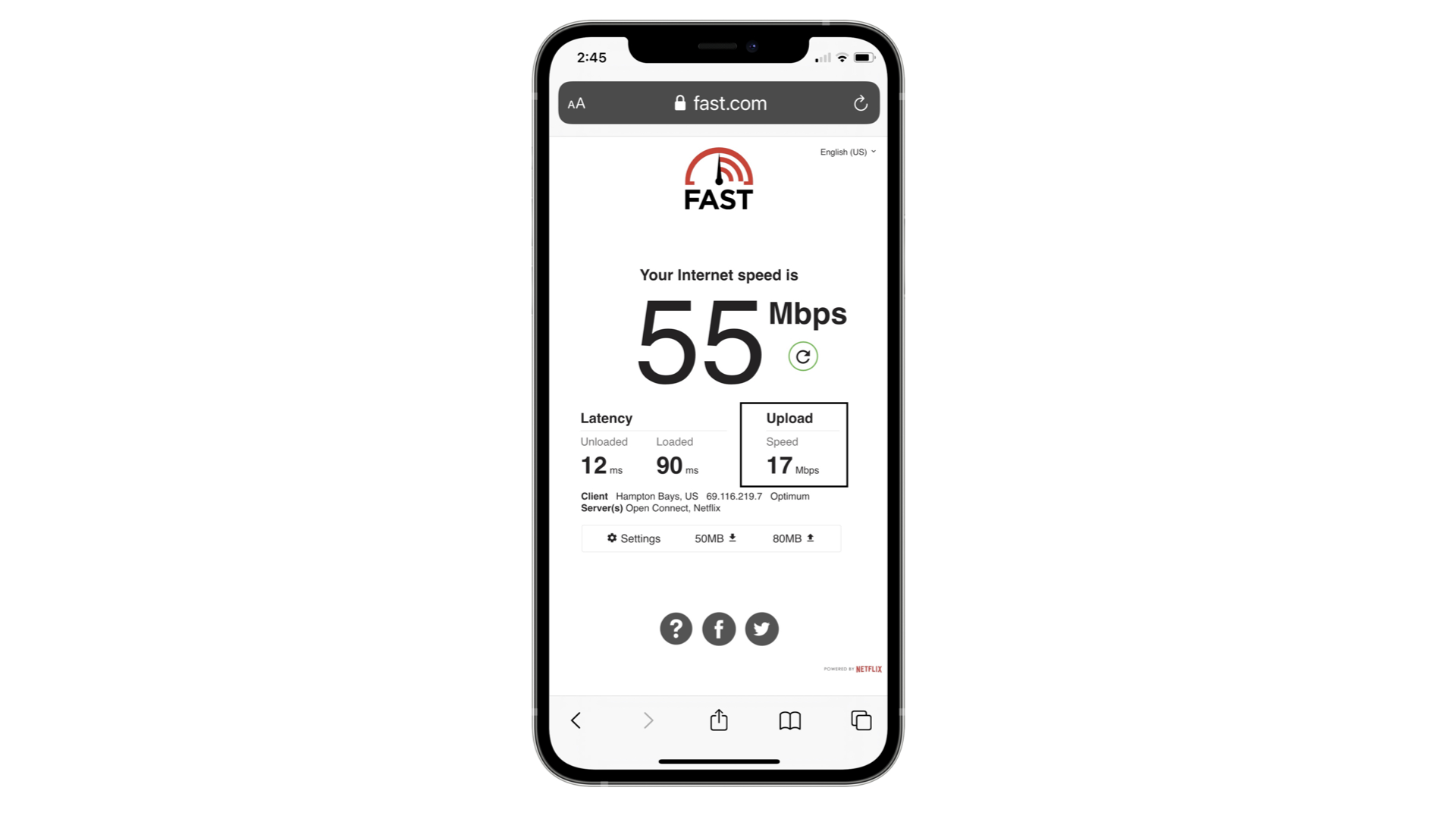A high-quality, stable internet connection is important for your live streams, so check the quality of your WiFi or 4G/5G network strength before going live on your streaming device. A bad network will produce a low-quality video.
A network test should only take a few seconds and will only show you the strength of your connection at that moment. Upload speed is the most important factor. A speed above 10 Mbps represents a strong signal to broadcast. The download speed should also be above 10 Mbps.
We suggest that you test your network via a third-party site like www.fast.com.
- Click go testing
- Click upload speed
- See below to read more about optimal streaming conditions:

Optimal streaming conditions
Sustained and stable upload speed is the most important factor when broadcasting live video. The Bambuser app automatically adapts to your available network bandwidth by adjusting video quality, but sudden changes in connection speed may manifest as a low frame rate for a moment. If the network drops out entirely, the app will try to reconnect automatically.
Bitrate
A video’s bitrate is the rate at which data is transferred from one point to another. In video streaming, bitrate concerns how much data each second of video consumes.
The higher your video quality, the higher your bitrate. A high-quality video contains more data than a frame of low-quality video, and so it can take longer to transfer that data from point A to point B.
Resolution
Resolution is the number of pixels in the video frame. The higher the resolution, the more pixels in the image. For example, 720p video resolution means an image with 720 pixels horizontally and 1280 pixels vertically.
Regardless of resolution, your video will be scaled to fit the player's size. If your video is transmitting at 360p, the image will be slightly blurry compared to 720p.
The highest 720p video resolution uses, at most, 7 Mbps in terms of upload speed.
Good quality 540p video resolution can be attained at around 2 Mbps. Viewers generally don't react negatively to the connection as long as the connection is relatively stable.
Below 2 Mbps may still be tolerable for some use cases but may not meet viewers' expectations on a professional production.
Networks with bandwidth below 1 Mbps, or Wi-Fis with many users competing for bandwidth, are generally unsuitable for professional productions.
The highest 720p video quality will consume 2-3 GB of data per hour, depending slightly on the capabilities of different devices.
A stable, non-crowded network will provide a better experience than a crowded but theoretically “fast” network. Try to avoid Wi-Fi networks that are shared with an unknown number of people, as sudden bursts in traffic by other users can severely affect your upload speed.